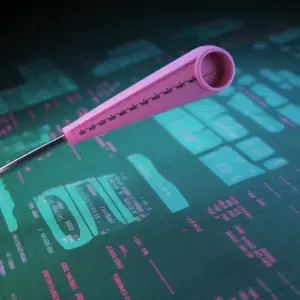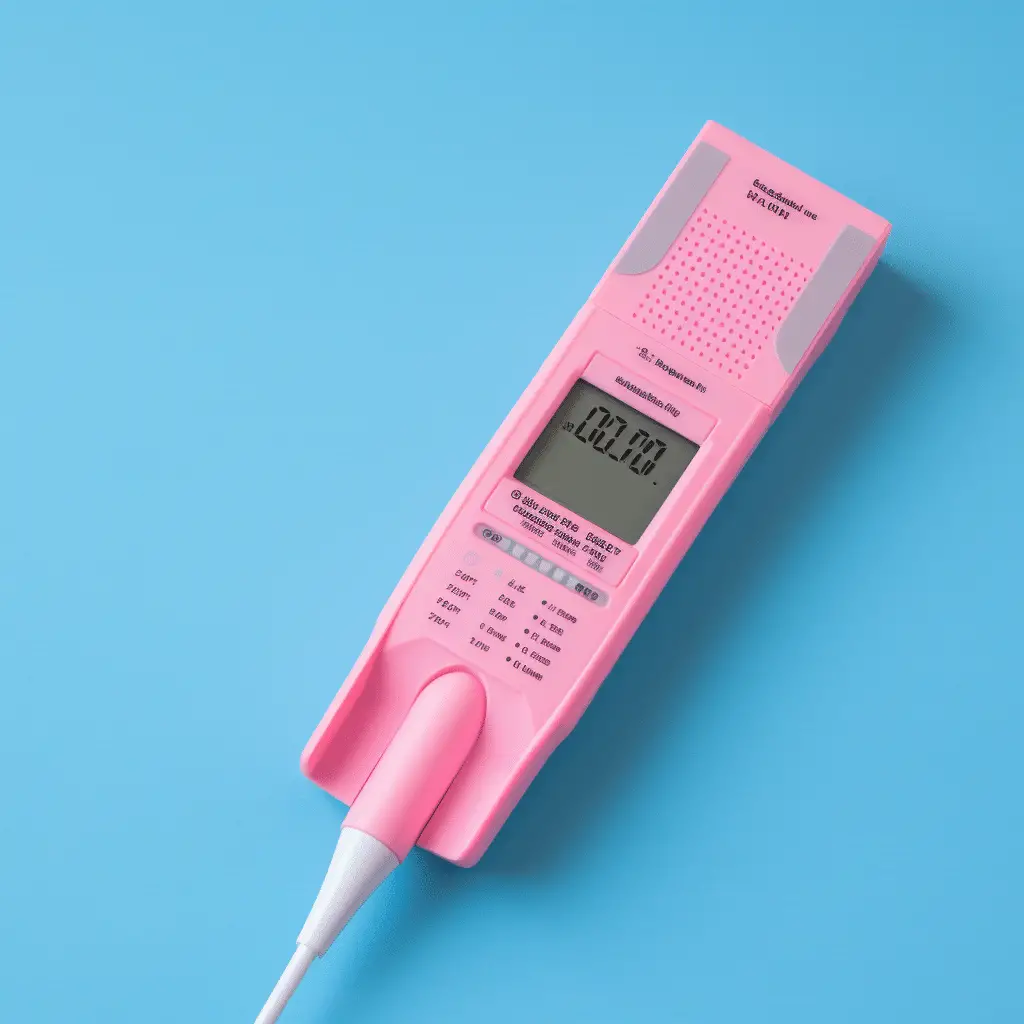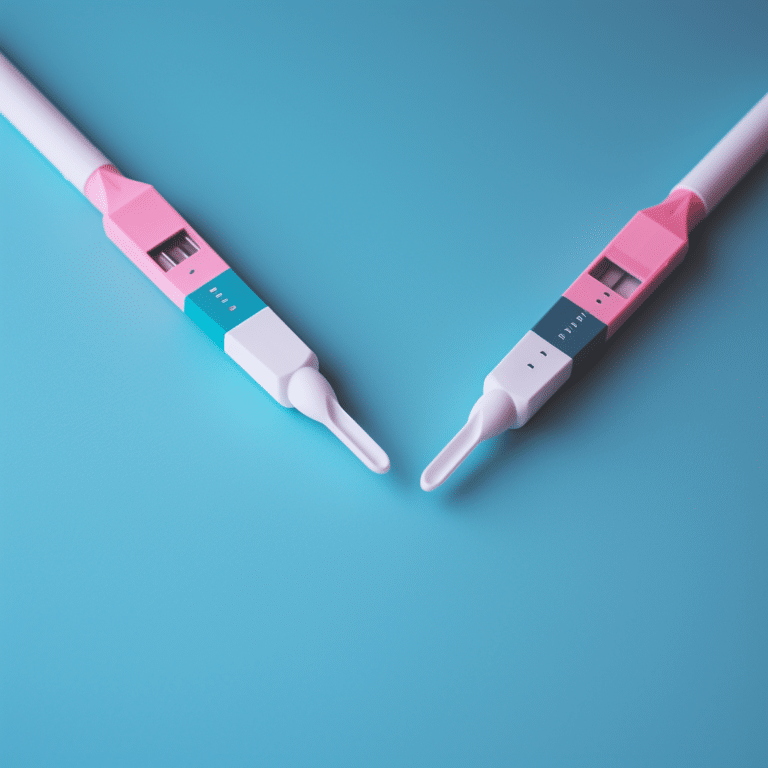Optimal Timing for Accurate Pregnancy Test Results
Have you been wondering if you’re pregnant? It can be a thrilling yet anxious time. So when do you take a pregnancy test? It depends on your unique situation.
Understanding the basics of pregnancy tests
Pregnancy tests are essential for women who think they may be pregnant. They detect the presence of hCG in a woman’s urine, which is produced when an egg is fertilized and attaches to the womb. Knowing the basics of pregnancy tests is a must for correct results.
Timing is vital when taking a pregnancy test. Most home pregnancy tests claim to be accurate on the first day of a missed period. Waiting a few more days after your missed period will boost the accuracy of the test. This is because hCG levels rise quickly in early pregnancy, so waiting longer will give a clear result.
Not all home pregnancy tests are equal. Some brands are more sensitive and can spot lower levels of hCG sooner. If you think you may be pregnant but have a negative result, it may help to try another brand or wait a few more days before testing again.
Remember: when taking a pregnancy test, timing is key. Waiting patiently can guarantee accurate results and stop unnecessary worry or disappointment. If you have pregnancy symptoms or worry about your menstrual cycle, don’t hesitate to contact your healthcare provider for advice and support.
Signs and symptoms of early pregnancy

Did you know that pregnancy signs and symptoms vary from woman to woman? It’s true! If you’re wondering if you could be pregnant, keep an eye out for these signs:
- Missed Period: A missed period is a common early sign of pregnancy. So, if your cycle is usually regular, taking a pregnancy test can be a strong indication.
- Breast Changes: Tenderness or swelling in the breasts is something many women experience in the early stages of pregnancy. The breasts may also feel sensitive to touch or be fuller than usual.
- Nausea and Fatigue: Nausea and extreme tiredness are other signs of early pregnancy. You may even have morning sickness or exhaustion throughout the day.
- Frequent Urination: Increased urination is a common symptom in the early weeks. It may be due to hormonal changes associated with pregnancy.
These symptoms don’t always mean pregnancy. Keep in mind that they can also be caused by other factors. So, if you have any combination of these signs and suspect you might be pregnant, take a home pregnancy test.
In addition, there are other unique details to consider. Appetite changes, food cravings, mood swings, and heightened emotions are all common during early pregnancy.
If you have any of these signs and are concerned about being pregnant, don’t wait to take a pregnancy test. Time is valuable when it comes to your health and well-being. Don’t miss out on crucial information.
Take action now and find out if you’re expecting. Knowing as soon as possible will help guide your future plans and get the necessary care and support during this special time in your life.
When to take a pregnancy test
Taking a Pregnancy Test: A Comprehensive Guide
When to take a pregnancy test:
- Timing: It is recommended to take a pregnancy test after a missed period for accurate results.
- Early testing: Some tests are designed to detect pregnancy even before a missed period, but the results may be less reliable.
- Testing frequency: If the first test is negative and there are still doubts, waiting a few days and retesting is advisable.
- Test sensitivity: Different pregnancy tests have varying levels of sensitivity in detecting the pregnancy hormone, hCG. Choose a test that suits your needs.
- Instructions: Follow the instructions provided with the test kit carefully to ensure accurate results.
- Consultation: If you are unsure about when to take a pregnancy test or if you suspect you might be pregnant, consulting a healthcare professional is always a good idea.
Additional details to consider:
It’s important to remember that each woman’s body is unique, and factors such as irregular periods or underlying health conditions may affect the timing or accuracy of a pregnancy test. Seeking medical advice can provide a clearer understanding of your individual situation.
Pro Tip: For the most accurate results, it is recommended to take a pregnancy test with the first urine of the day, as it contains a higher concentration of hCG.
By following these guidelines, you can make an informed decision about when to take a pregnancy test and increase the likelihood of obtaining reliable results.
Before Googling ‘how to undeniably prove you’re not the father,’ consider these factors before taking a pregnancy test.
Factors to consider before taking a pregnancy test
Taking a pregnancy test can be a life-changing experience. Before deciding when to take the test, there are a few things to consider. This will help guarantee accurate results and provide you with the support you need.
- Menstrual cycle: Track your menstrual cycle. Note the length and regularity of your periods. Missing a period or having irregular bleeding may mean you’re pregnant.
- Symptoms: Notice any changes in your body, such as tender breasts, nausea, tiredness, or more frequent urination. These can be signs of pregnancy and might prompt you to take a test.
- Timing: Choose the right time to take the test. Waiting until after you miss a period will make the results more reliable since hormone levels are higher then.
In addition to these factors, consider how you feel emotionally. The suspense of the results can be intense. So make sure you have the support of family or healthcare professionals.
Here are some tips to ensure accurate results and reduce worry:
- Read instructions: Each pregnancy test has its own instructions. Read them carefully. Understand how the test works and when it should be taken for the best results.
- Morning urine sample: Taking the test with your first morning urine is recommended. It has higher levels of hormones, making the results more accurate.
- Follow-up testing: If the first result is negative but you still think you might be pregnant because of ongoing symptoms or changes in your menstrual cycle, take the test again after a few days.
By considering these factors and following these tips, you can be sure when to take the pregnancy test and approach it with confidence. If you have any questions or need advice, see your doctor.
Types of pregnancy tests available
There are various options available for pregnancy tests. These tests can be categorized based on their method of detection and the place where they can be performed.
The following table shows the types of pregnancy tests available:
| Type of Test | Description |
|---|---|
| Urine Test | This is the most common type of pregnancy test that involves detecting the presence of hCG hormone in the urine to confirm pregnancy. |
| Blood Test | A blood test is more accurate and can detect pregnancy earlier than a urine test. It measures the hCG levels in the blood. |
| Home Test Kit | These kits are easily available in drugstores and can be used at home. They work similar to urine tests and provide quick results. |
| Clinic Test | A clinic or doctor’s visit involves a urine or blood test performed by a healthcare professional. These tests are highly reliable. |
Some additional details about pregnancy tests include the fact that urine tests can be done at home with privacy, while blood tests require a visit to a clinic or doctor. It is important to carefully follow the instructions provided with the test kit to ensure accurate results.
When considering which type of pregnancy test to choose, factors like convenience, cost, accuracy, and personal preference should be taken into account. It is advisable to wait until you have missed your period to take a pregnancy test for more accurate results. If the test result is positive, it is recommended to schedule an appointment with a healthcare professional to confirm the pregnancy and receive appropriate prenatal care.
Home pregnancy tests: Putting your peeing skills to the test, one stick at a time!
Home pregnancy tests
It have advanced remarkably in terms of accuracy. Some claim to detect hormones with an accuracy of up to 99%. Plus, they are user-friendly and results can be obtained rapidly. Generally, instructions are provided on the packaging. To use it, you can either collect urine and apply it on the test strip, or dip the test strip into a cup containing urine.
It’s important to follow the instructions and conduct the test at the right time in the menstrual cycle. Amazingly, the first commercial home pregnancy test debuted in 1976 by E.P.T.. From then on, these tests have been enhancing in accuracy and simplicity. Nowadays, millions of women around the world rely on home pregnancy tests to find out their pregnancy status.
Blood tests
Four blood tests can detect pregnancy:
- Quantitative: measures exact amount of hCG in the blood, even before a missed period.
- Qualitative: detects presence or absence of hCG.
- Serial: multiple tests to monitor hCG levels.
- Rh Factor: determines Rh factor status.
Plus, blood tests can check underlying health conditions that could affect pregnancy, such as diabetes or thyroid issues.
Remember: get help from a healthcare provider to interpret blood test results.
How to take a home pregnancy test
Taking a home pregnancy test requires following specific steps to ensure accurate results. Here’s a simplified guide on how to take a pregnancy test at home:
- Choose the right time: Take the test around one week after a missed period for the most accurate results.
- Read the instructions: Carefully follow the instructions provided with the test kit to understand how to use it correctly.
- Collect a urine sample: Use a clean cup to collect your urine sample, and then either dip the test strip into the urine or use a dropper to place a few drops onto the test window.
It’s vital to understand that each test may have slight variations, so it’s crucial to consult the specific instructions provided in the test kit. Remember to remain patient and wait for the indicated time before interpreting the results.
It’s important not to miss the ideal time to take a pregnancy test, as waiting too long may affect the reliability of the results. Don’t hesitate to take the test if you suspect pregnancy, as early detection can help you make informed decisions about your health and future plans.
Get ready to decipher the hieroglyphics on that tiny piece of paper, because reading instructions for a pregnancy test is like solving a puzzle with your pee.
Step 1: Read the instructions
Pregnancy can cause a huge life-change, with both excitement and worry. If you think you may be expecting, a home pregnancy test is a great way to get clarity. Before taking the test, it’s key to understand the instructions!
- Find a calm place to read the instructions.
- Unwrap the package of the pregnancy test.
- Take out the instruction leaflet.
- Read the instructions carefully, noting any details.
- Write down any key points for future use.
- If you have questions, ask a healthcare professional.
Familiarizing yourself with the steps is important, as this helps you to perform the test accurately and without too much stress. Also, remember that different brands have various instructions, so make sure to follow the ones specific to your kit.
Fun Fact: Home pregnancy tests are usually 99% accurate when used correctly and taken one day after you miss your period.
Step 2: Collect urine sample
It’s time for Step 2: Collect urine sample! This is key for obtaining accurate results from your home pregnancy test. Find a clean and sterile container to collect the sample. The ideal time is early in the morning as the concentration of hCG in the urine is higher at this time. Before collecting, make sure to wash your hands with soap and water. Position yourself over the toilet and start urinating midstream into the container. Cap and label it with your name, date, and time of collection. Ensuring accuracy depends on correctly following these steps.
Home pregnancy tests have evolved since their invention in 1976 by Margaret Crane Hunt Clapp and David Vorenberg. This invention has enabled women to determine their pregnancies in private without visiting a healthcare professional. Home pregnancy tests offer ease and convenience, allowing women to take control of their reproductive health. This innovation is widely used and has contributed to the accessibility of pregnancy testing worldwide.
Step 3: Perform the test
To get a precise answer, follow these steps:
- Read the instructions of your home pregnancy test kit.
- Collect a urine sample in a clean container.
- Take the testing strip from the packaging, without touching the sensitive end.
- Put the strip into the urine sample for the specified time.
- After the waiting period, remove the strip and put it on a flat surface.
- Look for lines or symbols that indicate a positive or negative result.
It is essential to use a dependable home pregnancy test kit. Following these instructions closely will boost your chances of getting an accurate result.
A few tips to remember:
- Test in the morning when your urine is concentrated. This increases accuracy.
- Follow directions properly to prevent false results.
- Use a timer to make sure you don’t exceed or shorten the waiting period.
If you keep these tips in mind, you will become more likely to get a precise and reliable result while taking a home pregnancy test.
Step 4: Read the results
It’s time to move on to the next step after completing the home pregnancy test; reading the results. This is vital for finding out if you’re pregnant or not. Here are three easy steps to read the results:
- Look for the control line. It’s usually a coloured line or symbol. If you don’t spot it, the test may be malfunctioning, so retake it with a new kit.
- Check for the test line. If it’s there, it suggests a positive result; you’re pregnant. However, different tests may demonstrate this in different ways. It may be a coloured line or symbol like the control one, or words like ‘pregnant’ or ‘not pregnant’. Check the instructions of the specific test kit for info.
- Determine interpretation time. Each pregnancy test has a certain time frame when results can be read correctly. It’s usually stated in the instructions. Make sure to stick to this timeframe, as reading too early or late may lead to incorrect interpretations.
Plus, some tests have digital displays which say ‘pregnant’ or ‘not pregnant’. This does away with any confusion by removing interpretation of lines or symbols.
Pro Tip: Follow all instructions properly and talk to your healthcare provider if you have any queries or worries about interpreting the results of your home pregnancy test.
Interpreting the results
When interpreting the results of a pregnancy test, it is important to understand the different possibilities and what each result could mean. By analyzing the outcome, you can gain insights into whether or not you are pregnant. Here is a breakdown of the different scenarios and their implications:
Interpretation of Results:
| Positive Result | Negative Result | |
|---|---|---|
| Appearance | Two lines appear | One line appears |
| Meaning | Indicates pregnancy | Indicates no pregnancy |
| Timing | Can occur after a missed period | Can occur if the test is taken too early |
| Accuracy | Highly accurate | Less accurate |
Remember, it’s important to follow the instructions provided with the specific pregnancy test you are using to ensure accurate results. If you receive a positive result, it is advisable to consult with a healthcare professional for further confirmation and guidance.
Pro Tip: For the most accurate results, it is recommended to take a pregnancy test in the morning as the concentration of the pregnancy hormone, hCG, is generally higher in the urine at that time.
Positive or negative, the results of a pregnancy test can change your life faster than a Kardashian changes her hairstyle.
Understanding positive and negative results
Interpreting positive and negative results can be tough. To make it simpler, we’ve created a table below. It’ll help you comprehend the meaning of these results.
| Positive Results: |
|---|
| – Showing that something is present. |
| – Confirming an underlying issue. |
| Negative Results: |
|---|
| – Pointing to the absence of something. |
| – Suggesting that a condition might not be present. |
It’s essential to keep in mind these distinctions between positive and negative results. They can be very useful in deciding if a certain condition is present or not, and point to further research or rule out any potential issues.
This is an intriguing fact about positive and negative results: Throughout history, scientists and researchers have been working hard to create accurate ways to interpret these outcomes. Their hard work has led to technological developments in medical diagnosis and in many other fields where these results are important.
By understanding positive and negative results, you will be more informed and able to make better decisions.
False-positive and false-negative results
Let’s explore the data in a table. It shows true positive, true negative, false positive, and false negative results. False positives can lead to unnecessary treatments or interventions, causing physical, emotional, and financial burdens. False negatives can cause delayed or missed diagnoses, and put patient health at risk.
An example is a patient who received a false-positive breast cancer screening result. Anxiety rose as she prepared for treatment, but further examination showed the initial diagnosis was incorrect.
It is important to be cautious with false-positive and false-negative outcomes. By understanding them, we can interpret results accurately and make decisions for patient care.
Follow-up actions after a positive or negative result
Semantic NLP Variation of the heading ‘Follow-up actions after a positive or negative result’:
Managing the outcome of your pregnancy test
Paragraph 1: Post-test actions require attention regardless of the result. Ensure you take appropriate measures based on the outcome to ensure the well-being of both you and the potential baby.
Paragraph 2 (4-Step Guide):
- Confirming a positive result: Schedule an appointment with a healthcare professional for further evaluation, guidance, and prenatal care.
- Validating a negative result: While non-pregnancy is indicated, it’s essential to consider contraception options and consult a healthcare provider if you have concerns.
- Emotional support: Irrespective of the result, seek emotional support from your partner, family, or friends to process the outcome and discuss future plans.
- Retesting if necessary: If the initial test yields an unclear or inconclusive result, wait a few days before retesting. Consult a healthcare provider if results remain uncertain.
Paragraph 3: Discuss your results and any concerns with your healthcare provider, who can offer personalized advice tailored to your specific circumstances. Stay informed about pregnancy-related symptoms, changes in the body, and potential red flags to address promptly.
Paragraph 4: A close friend of mine experienced a negative pregnancy test result and struggled with feelings of disappointment. However, with support and guidance from her doctor, she eventually conceived and delivered a healthy baby several months later. This example highlights the importance of professional guidance and perseverance in such situations. Because Google can’t give you a high five when you get a positive result.
Confirming the result with a healthcare professional
It is important to be open and honest with a healthcare professional when checking test results. This allows them to fully understand the situation and interpret the results accurately. They may ask for more tests or evaluations, for a complete assessment.
Additionally, professional advice can offer emotional support during this time. Whether the result is positive or negative, assistance from an expert can provide guidance and reassurance. Taking proactive steps towards one’s health is very responsible.
Laura’s story is an example. She had persistent fatigue and her blood test showed abnormal markers. So, she consulted a specialist. The doctor looked at her medical history, symptoms and previous results, before confirming the initial finding with new tests.
This method allowed the healthcare professional to find the cause of Laura’s fatigue and create a proper treatment plan. Regular appointments monitored her progress, allowing any needed adjustments.
Next steps if the test is positive

If you get a positive test result, act right away! Here’s what you must do:
- Talk to your healthcare provider. Contact them immediately and discuss your results. They’ll give you personal instructions.
- Isolate yourself. Keep away from others until you get more advice from your doctor.
- Tell your close contacts. Let those who you’ve been near know about your positive result. This will help stop the virus from spreading and let them take the necessary precautions.
- Follow safety measures. Wash your hands, wear a mask, and stay apart from people.
- See any changes in your health? Let your healthcare provider know. They’ll help you manage your symptoms.
Keep in mind that everyone’s situation is different. So it’s important to follow your doctor’s advice.
On top of that, a positive result can be nerve-wracking. Talk to family, friends, or support groups for emotional support.
In 1918, during the influenza pandemic, people who had positive tests did similar steps mentioned above. By following the steps, they prevented the virus from spreading in their communities and kept their loved ones safe. Let us learn from the past and take immediate action if we get a positive result.
Next steps if the test is negative
If your test results are negative, it means you haven’t caught the virus. There are four main steps to take to stay safe and protect others:
- Keep practicing preventive measures: This includes masks, social distancing, and regular hand washing or sanitizing.
- Monitor your symptoms: Even though your test was negative, watch out for any new symptoms. If any appear, talk to a doctor straight away.
- Take necessary action if exposed again: If you have been near someone who tested positive after your negative result, re-test as instructed by health authorities.
- Stay informed and updated: Check reliable sources such as healthcare authorities or government websites for updates.
Also, if you’re ever uncertain about your health, speak to a medical professional.
Remember, testing negative isn’t a guarantee of immunity or full protection. So, keep following the preventive measures to stop the virus spreading.
Sarah, for example, had mild symptoms and was exposed to COVID-19 at work. She kept up with the preventive measures and monitored her health. No new symptoms appeared, and she stayed healthy. Sarah’s experience shows how even after a negative test, being careful can help us and those around us.
Conclusion
Understand when to take a pregnancy test for accurate results. Too early can cause a false negative, too late can bring stress. Missed period is the best time to test.
Certain things can change accuracy. Medication or medical conditions can alter hormone levels. If you think you’re pregnant but get a negative result, wait a few days and test again. Morning time is best; hormone levels are higher in urine then.
Frequently Asked Questions
Q: When should I take a pregnancy test?
A: It is recommended to wait until your period is at least one day late before taking a pregnancy test for accurate results.
Q: Can I take a pregnancy test before my missed period?
A: Some pregnancy tests claim to detect pregnancy even before a missed period, but it’s usually more accurate to wait until after your missed period to get reliable results.
Q: How soon can a pregnancy test detect pregnancy?
A: Most pregnancy tests can detect pregnancy hormones in your urine about 1-2 weeks after conception. However, the accuracy may vary depending on the brand and sensitivity of the test.
Q: What is the best time of day to take a pregnancy test?
A: It is typically recommended to take a pregnancy test in the morning as your urine is more concentrated and may contain higher levels of the pregnancy hormone hCG (human chorionic gonadotropin).
Q: Can medications or medical conditions affect the accuracy of a pregnancy test?
A: Certain medications and medical conditions can potentially interfere with the accuracy of a pregnancy test. It is recommended to consult with a healthcare professional for specific concerns.
Q: What should I do if my pregnancy test is negative but I haven’t gotten my period?
A: If you believe you could be pregnant and your test is negative, it is advisable to wait a few more days and retest. If you continue to have doubts or concerns, it is best to consult with a healthcare professional.






